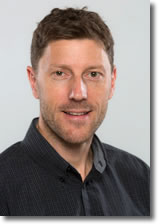Page 1, 2
Inhibition of Glycolysis
FWGE also effects cancer cell proliferation by inhibiting glycolysis. The cancer cell's dominant use of glycolysis even in the presence of oxygen, the Warburg effect, is characteristic of the hypermetabolic activity that fuels the explosive growth of cancer, steals glucose from healthy tissue, and produces metabolic byproducts that contribute to systemic illness. Warburg theorized that if the uptake of glucose into cancer cells could be inhibited, their energy supply could be choked off, slowing or stopping cancer growth and forcing cancer cells to die.
Targets offered by the Warburg effect are very diverse. They are not the result of mutated genes. Instead, they are simply enzymes that cancer cells are far more dependent upon than normal cells. These enzyme targets are stable over time, essential to tumor cell growth, survival, and proliferation, and they are present in virtually all cancers.
To give one example, pancreatic cancer cells utilize vast amounts of glucose for the carbon atoms they contain. The Warburg effect in these cells bypasses the slower oxygen dependent pathways of normal cells. Pancreatic cancer cells utilize the nonoxidative transketolase (TK) enzyme pathway, incorporating carbon atoms from glucose to make ribose, the sugar that forms the backbone of RNA and DNA required for cancer cell proliferation and tumor metastasis.
FWGE affects a strong inhibition of transketolase (TK), slowing glucose uptake into pancreatic cancer cells and inhibiting the cells' synthesis of RNA. At the same time, FWGE increases direct glucose oxidation and ribose recycling in the pentose cycle – hallmarks of normal cell metabolism.8 The cancer cells are forced to revert to the metabolic pathways used by normal cells using glucose more for production of fatty acids and cell structure components and less for ribose. These metabolic shifts promote cell differentiation to normal cell phenotypes in some cells, and cause cancer cell death by apoptosis in others.
FWGE also inhibits the enzyme glucose-6-phosphate dehydrogenase (G6PDH), a metabolic enzyme essential for using glucose carbons to make ribose through the pentose phosphate pathway mentioned above. G6PDH levels fell by more than 90% in 3 days at a dose of 0.5 mg/ml of FWGE, and by more than 95% in a shorter time with a higher dose.9 This showed an ability of the FWGE to virtually eliminate cancer cell proliferation, through inhibition of both major and minor pathways of cancer cell synthesis of ribose.
As an aside, there is no evidence that FWGE is contraindicated with high-dose vitamin C (HDVC) therapy, which depends upon adequate levels of G6PD prior to commencement. In fact, there is evidence that FWGE works synergistically with HDVC to facilitate the oxidative effects of that therapy against cancer cells.
Mitochondrial Rescue
Both apoptosis and the inhibitory effects on glycolysis from FWGE can probably be explained by looking at the effects that FWGE has on mitochondrial function. As Warburg showed us in the 1920s and 1930s, mitochondria use glucose metabolites and oxygen to produce ATP and to fuel cellular processes. As a result, the healthy function of mitochondria also activates its own intrinsic apoptotic pathway. On the contrary, cancer cells predominantly utilize glucose, even in the presence of oxygen, to fuel cell growth independent of the mitochondria and its apoptotic signals.
As with other metabolic therapies, FWGE induces cancer cells to engage in oxidative phosphorylation via their mitochondria. Unlike other metabolic therapies, though, it does this through a unique set of effects on the malignant metabolic machinery. More specifically, FWGE:
- downregulates the pentose phosphate pathway to decrease glutathione and ribose production
- downregulates hexakinase-4 to decrease glucose uptake
- induces both cytostatic and cytotoxic effects in multiple cancer cell lines
- regulates tumor cell proliferation by altering the rate of glucose intake and the synthesis of nucleic acid ribose through the nonoxidative steps of the pentose cycle.
This latter effect of FWGE is present most efficiently in the ribosomal RNA fraction of tumor cells. Because ribose is a close metabolite of glucose, and ribosomal RNA is essential for de novo enzyme protein synthesis and cell proliferation, it is evident that inhibiting the formation of ribose to build ribosomal structures is one of the most important underlying mechanisms by which FWGE regulates tumor cell growth.
Finally, FWGE has remarkable effects on lipid synthesis and the oxidation of the first carbon of glucose through the oxidative steps of the pentose cycle. FWGE increases glucose oxidation in the pentose cycle and therefore acts as an important agent in controlling oxidative stress and cell damage.10
With all this in mind, there are now two very clear lines of evidence for its efficacy. First, cell studies clearly show a wide range of metabolic effect on malignant cells. More compellingly, though, are the clinical trials.
- A 2003 study that found colorectal patients who used FWGE in combination with their conventional cancer therapy resulted in an additional 82% reduction in tumor recurrences, a 67% reduction in metastasis, and a 62% reduction in deaths as opposed to those who just received conventional therapy11
- A 2006 study on patients with oral cavity cancer that found that those taking FWGE extract experienced only a 4.5% incidence of recurrence of cancer at the original site, as opposed to 57.1% of those not taking it. Also, the group taking FWGE extract only had disease progression of 9.1% in contrast to 61.9% in the control group. The researchers determined that adding FWGE extract to the treatment program reduced the overall progression of the cancer by 85%.12
- A 2008 study on patients with stage III melanoma found that those taking FWGE increased their survival rate by 50% and doubled the time that they remained cancer free, as compared with the control group13
Conceptualizing cancer as a metabolic disease is at least as old as Otto Warburg's seminal discoveries of the early 20th century. Formulating specific treatment strategies based upon this model is a relatively new and exciting field of exploration. FWGE is a promising new therapy in this model, not to be thought of as a singular cure for cancer, but nothing is. As part of a comprehensive metabolic treatment strategy it offers a great deal of optimism toward control of the malignant process.
If cellular transformation to a cancerous phenotype is a fundamentally adaptive event, then in the tradition of Aikido we might explore what it means to "get behind" and "redirect" these cells, rather than blindly attack and kill. This is not the inclination of a multibillion dollar industry devoted for decades to killing cancer cells. But alternative practitioners are in a different business altogether.
Notes .pdf

Dr. Greg Nigh is a naturopathic physician and licensed acupuncturist practicing at Immersion Health in Portland, Oregon. He has specialized in naturopathic oncology for the past 8 years.
Page 1, 2
|
![]()
![]()
![]()





